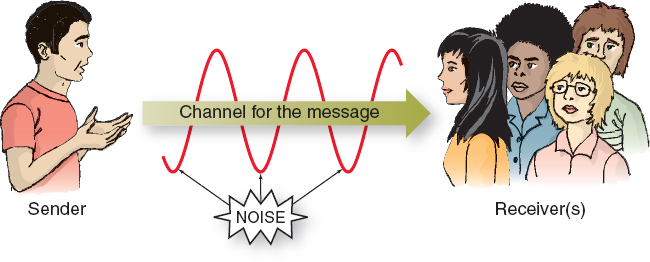The Linear Model
In the linear model of communication (see Figure 1.1), scholars proposed that a sender originates communication with words or actions constituting the message. The message is then carried through a channel (air and sound waves, written or visual, over telephone lines, cables, or electronic transmissions). Along the way, some interference, called noise, occurs. Because of the noise, the message arrives at the receiver mchanged in some way from the original (Shannon & Weaver, 1949).

The linear model depicts communication as occurring in only one direction: from sender to receiver. So, although this model may be useful for showing how electronic signals (such as television and radio) are transmitted to the public, it does not show the receiver’s role in interpreting meaning or in sending simultaneous feedback to the sender in a conversation. For this reason, scholars have dismissed the linear model as not particularly useful for understanding most kinds of communication, particularly interactive forms.